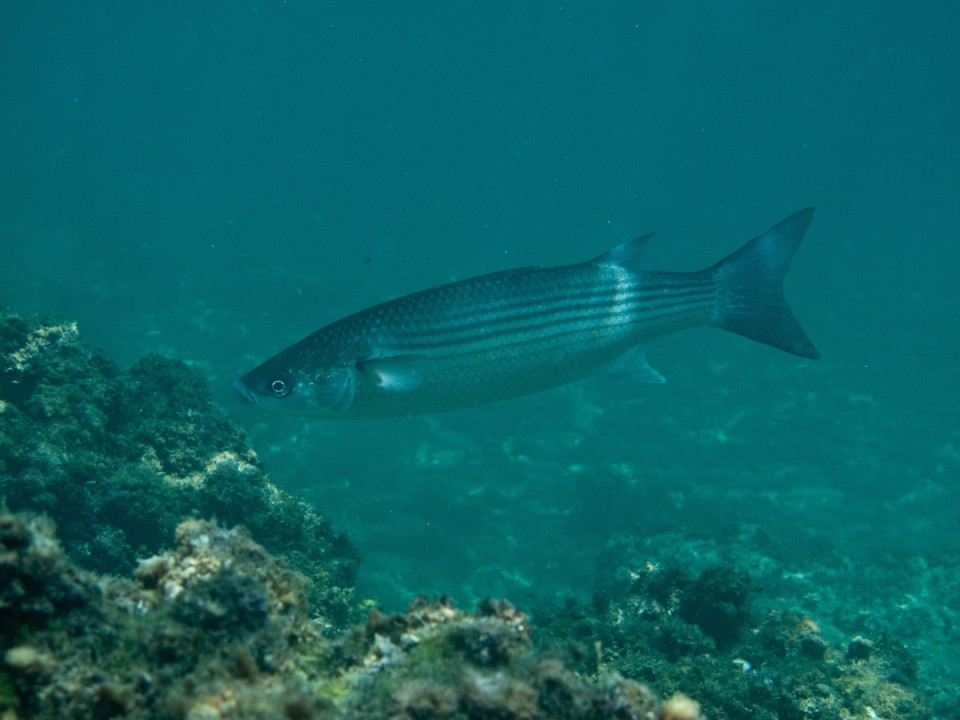Mugil cephalus
Il cefalo volpina fa parte della famiglia Mugilidae, che conta circa un’ottantina di specie di acqua dolce e salata. Il cefalo Volpina è una specie eurialina, cioè in grado di sopportare ampie variazioni di salinità tanto che si ritrova regolarmente sia in acque marine, che dolci, che salmastre. Il corpo è robusto, anteriormente a sezione trapezoidale e cilindrica al centro; il peduncolo caudale è robusto e alto. La testa è massiccia con muso corto e bocca terminale, le labbra evidenti ma non molto carnose; si nutre di ogni tipo di materiale in sospensione, di invertebrati bentonici ed anche di materiale organico in decomposizione. La sua colorazione assomiglia a quella degli altri cefali ma i fianchi grigio-argento hanno sei-sette strisce longitudinali bruno-nere mentre il ventre è bianco con riflessi argentei. Tra i cefali si riconosce facilmente per la testa larga, una macchia scura alla base delle pettorali e l’ occhio ricoperto da una palpebra adiposa. Raggiunge la lunghezza massima di 80 cm per circa 4,5 kg di peso. Gli esemplari che raggiungono i 20 cm diventano maturi sessualmente e depongono le uova in mare. Dopo la schiusa gli avannotti si avvicinano alla costa e poi risalgono i corsi d’acqua dolce che sfociano nel mare. Si pesca in svariati modi ma è anche oggetto di allevamento nelle lagune costiere e nelle valli da pesca. La taglia minima è 20 cm.

